Early Infantile Developmental Epileptic Encephalopathy almost always starts in the neonatal period or in very early infancy (0-3 months). This syndrome is a combination of 2 syndromes previously called Ohtahara Syndrome (also known as early infantile epileptic encephalopathy) which was mostly associated with tonic seizures; and early myoclonic encephalopathy, where myoclonic seizures were the defining feature. Due to many common features between these two syndromes they are now considered under the same heading of EIDEE.
Boys and girls are equally affected. Family and birth history are normal. Babies may show abnormal tone and posture, but abnormalities may be undetected due to young age. Most of the children will have moderate to profound developmental delay, with intellectual impairment as they age. They may present with disorders of movement, vision, feeding and orthopaedic difficulties.
Unless the underlying cause has a treatable basis, seizures are typically resistant to treatment with anti-seizure medications. As they age, children with EIDEE may go on to develop other epilepsy syndromes such as Lennox Gastaut or Infantile Spasms.
It is a syndrome with several causes, which can be identified in 80% of cases. These can include:
- Structural brain abnormalities are the most common cause
- Genetic aetiologies, including chromosomal disorders, pathogenic gene variations
- Metabolic aetiologies, mitochondrial disorders, non ketotic hypoglycaemia
Symptoms
There is a varied range of seizures children diagnosed with EIDEE can experience:
- Tonic and/or myoclonic seizure must be present for this diagnosis.
- The seizures can be very frequent throughout the day, clustered, singly, or serial
- Myoclonic jerks which affect small areas of the body, or the limbs
- Massive myoclonic (sudden bending or extension) movements
- Focal or multifocal myoclonus
- Tonic seizures when stiffness occurs in the limbs frequently
- Epileptic spasms, usually clustered on waking
- Seizures where there are different features in one seizure e.g. focal tonic, focal clonic
- Focal motor seizures causing jerking movements
- Focal to bilateral tonic clonic seizures
Status epilepticus is a risk in EIDEE and parents need to be informed about managing this risk with emergency medication.
Diagnosis
The EEG (electroencephalogram) test which records the ongoing electrical activity in the brain shows evidence of abnormal discharges referred to as suppression‐burst or multifocal epileptiform discharges with diffuse slowing. The infants have abnormal neurological presentation, often they are extremely floppy. Imaging with can show if structural abnormalities are present, which are a common cause. Known genetic aetiologies which can be identified include SCN2A, KCNQ2, STXBP1, CDKL5, KCNT1.
Treatment
Where a cause has been identified the treatment may consist of therapies to treat that underlying cause, such as metabolic therapies. The actual choice of medication is difficult, and no one anti seizure medication appears to be more effective than another. Steroid treatment with ACTH or prednisolone may be introduced.
For those children who go on develop Lennox Gastaut Syndrome there may be additional treatment options available.
Prognosis
Due to the severity of EIDEE and the seizures associated with it many babies do not survive beyond the early years. Those that do may make little development progress and remain totally dependent and often feed poorly. Some will develop other difficult to control epilepsy syndromes with age, such as Lennox Gastaut or Infantile Spasms.
Further Information
- Further information on Anti-Seizure Medications can be found by visiting the 'Treatment' section of our website.
- Further information on diagnosis can be found by visiting the 'Diagnosis' section of our website.
- Other useful resources surrounding epilepsy can be found throughout our 'Epilepsy Information' section.
- If you need any information or support regarding epilepsy, contact your local Community Resource Officer - you can find their details by visiting the 'Our Local Service' section of our website.
